Log in or create new account to save this product to your wishlist.
The 4 Building Blocks for a Healthy and Green Lawn
Healthy grass requires four things to thrive. Find out more in our comprehensive article about keeping your lawn beautiful all year round.
Latest articles
7 MIN 22 Jul How to keep your lawn in shape this summer 9 MIN 15 Jul Watering Your Garden: 10 Top Tips! 11 MIN 15 Jul Is Your Grass Type Right for your Garden? 11 MIN 10 Sep Create Your Low-Maintenance Garden – Tips and Ideas 11 MIN 08 Sep The Ultimate Guide to Choosing the Perfect Hedges for Your Garden 12 MIN 30 Aug The Top 20 Evergreen Climbers to Transform Your GardenDid you know that plants are the only living organisms that make their own food? Our grass plants rely on four indispensable building blocks for photosynthesis — the process by which plants transfer sunlight into sugars that feeds their growth.
- Photosynthesis explained (in brief)
- So, what are the building blocks of a healthy green lawn?
- Building block #1: Water
- Building block #2: Mineral building materials
- Building block #3: Sunlight
- Building block #4: Air (carbon dioxide)
- What can you do for a greener lawn?
In this article, we’ll explore the four essential building blocks for a healthy and green lawn, so you can ensure your turf gets everything it needs to thrive.
Ready? Let’s go!
Photosynthesis explained (in brief)
If you want a beautiful green lawn, it’s good to understand what your grass needs to thrive.
Essentially, grass is packed with chloroplasts — sac-like cells containing chlorophyll, the green pigment that allows the plant to absorb energy from the sun. And photosynthesis is the process by which carbon dioxide and water are converted into nutrients and oxygen.
So, we must help our grass plants photosynthesise for an amazingly beautiful lawn.
How plants absorb nutrients
Plants extract minerals (or nutrients) from the soil, using sunlight, air, and water to produce sugars (carbohydrates) and oxygen. The grass plant stores the carbohydrates within its leaves and feeds on them to boost growth, emitting oxygen back into the atmosphere.
So, our lawns are valuable air purifiers — as long as we provide the four building blocks of optimal growth.
So, what are the building blocks of a healthy green lawn?
Grass requires four things to grow optimally:
- Water
- Mineral building materials
- Sunlight
- Air
If your turf doesn’t get enough of one of these elements, photosynthesis cannot function properly, and your grass’s growth will falter.
So, without one of these essential building blocks, the chloroplasts within the grass plant die, and your lawn loses its beautiful green colour.
Let’s look at each element individually.
Building block #1: Water
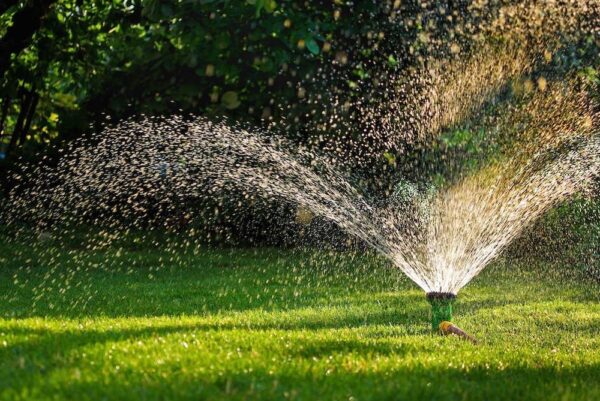
All life on planet earth requires water to thrive – just as we need water to survive, so does your lawn.
Grass plants absorb water from the soil through their roots, typically provided naturally, via rainfall. However, during drought periods, we need to provide additional water; otherwise, your grass turns yellow.
Remember, clay soil retains moisture better than sandy soil, which dries out much more quickly.
TIP: Identify your soil type. Grab a handful of earth and squeeze it in your palm. If the soil sticks together in a firm lump, you have clay soil; if it remains loose and loses its form once your release your palm, you have sandy soil.
Read more about watering your lawn.
Building block #2: Mineral building materials
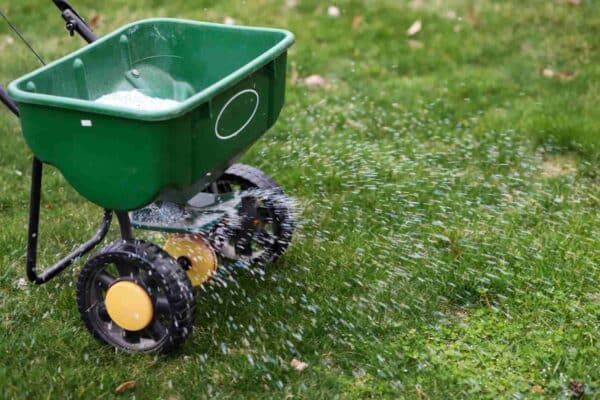
Most people believe that adding fertiliser is all you need for nutritious soil. And while fertiliser is undoubtedly essential for developing a healthy lawn, your turf also occasionally requires manure.
Liquid animal manure includes a great deal of mineral-building material, which helps your soil develop a better texture that holds onto its nutrients more successfully. And while most of the essential minerals are naturally present in your soil, boosting it when it becomes depleted is a good idea.
Your grass takes minerals from the soil during photosynthesis, storing its carbohydrates in the leaf. But when you mow your lawn, you remove the plant’s primary food source.
However:
This isn’t all bad because mowing triggers a growth hormone that restarts photosynthesis.
But:
It means that your grass extracts more mineral content from the soil to restart photosynthesis.
So, if you mow your lawn each week, your grass constantly draws minerals from the earth. And over time, this impoverishes the soil, which we can reverse with organic fertiliser.
Lawn doctor Louis says:
Fertilise your soil in spring and autumn — using an organic fertiliser at least once a year. This will help return the mineral content to your earth.
Check out our range of fertilisers.
Building block #3: Sunlight
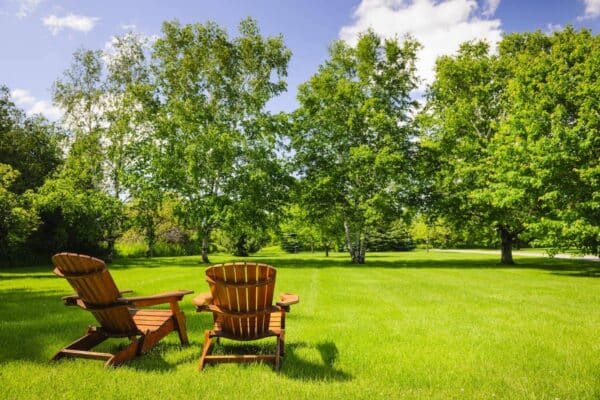
The third element your grass needs is sunlight. Without good access to the sun, your grass blades can’t photosynthesise successfully.
But what do you do for a shady lawn?
Perhaps there’s a building, a tree, or a wall blocking out the sunlight from your lawn — and this can cause bald patches and cold, wet soil, which encourages moss and weeds.
In this case, sow a grass seed type that thrives in the shade, such as MOOWY’s Shade and Sun grass seed. This seed mix offers even grass coverage, even in areas that receive little to no direct sunlight.
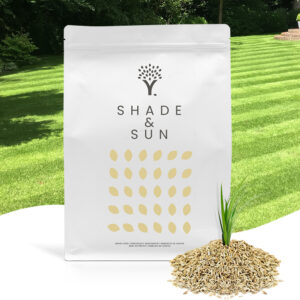
- Grows even underneath trees
- Fully germinates in 2-3 weeks
- Perfect for both shady and sunny areas
Building block #4: Air (carbon dioxide)
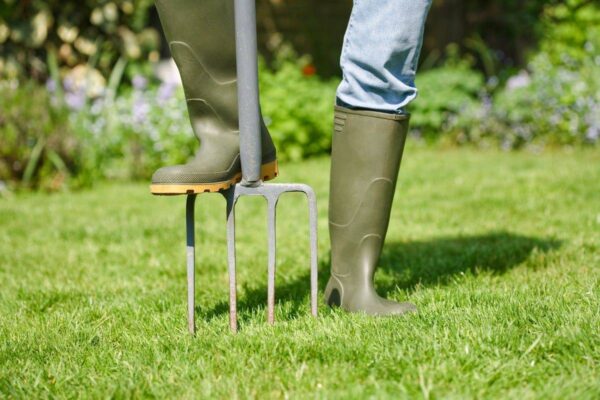
Carbon dioxide is naturally present in the earth’s atmosphere, both in the air and soil. And all plant life relies on carbon dioxide to aid photosynthesis.
So, for healthy roots, there needs to be a good air supply within the soil. And the biggest obstacle to air penetrating the soil is compacted earth.
Your soil gets compacted for several reasons:
- Repeated exposure to heavy rain
- The cycle of drenching and drying
- The weight of garden furniture
- The weight of your lawnmower
Heavy use in particular areas, such as around goalposts
All of these factors contribute to compacted soil. And in this case, it’s time to aerate.
Read on for more details about aeration, or check out our expert’s guide to aerating your lawn.
Lawn doctor Louis says:
If your turf doesn’t get enough of one of these essential building blocks, your lawn won’t photosynthesise properly, and your grass won’t grow.
What can you do for a greener lawn?
So, if you want a greener lawn this year, follow our tips for fertilising, aerating, mowing, and aiming for maximum sunlight.
Fertilise
Fertilise your soil at least twice yearly to maintain a vital soil rich in beneficial micro-organisms.
But not all fertilisers are equal. You need to examine the NPK value of each type of fertiliser and choose one with the correct chemical mix for your lawn.
Check out our essential guide to NPK fertilisers to find out more. (LINK)
Aerate
I recommend scarifying your lawn at least once a year to break up the soil surface and remove the moss and weeds that can suffocate your lawn and drain the soil of its nutrients.
This will allow the appropriate light, air, and nutrients to reach your grass’s roots.
As well as scarifying, aerate your soil with either aerating sandals, an aerator machine, or a hollow tine aerator.
Sunlight
It’s not always possible to get full sun access over your entire lawn — it’s not like you can knock down walls or move buildings.
Nonetheless, these approaches could help maximise the sunlight for your lawn:
- Prune large trees and hedges to minimise shade
- Avoid placing garden furniture directly onto your lawn (or leaving it on the lawn for prolonged periods).
- Create flower beds for shade-loving plants on your lawn’s east and south sides.
Mow with a reel mower
There are lots of types of lawnmowers, from hovers to reel mowers.
And while hover mowers are quick and efficient, they don’t always get as clean a cut as a reel mower, which creates that classic tennis court stripe across your lawn. This helps create a denser turf.
Remember, regardless of the type of mower you use, always ensure the blades are sharp.
Don’t mow too short
Never mow your lawn shorter than 4cm — remember, you’re removing your grass plants’ food source. Grass that’s too short will burn in the sun and dry out very quickly.
If you want to clip your lawn very short, create an ornamental lawn with MOOWY’s Premium Lawn grass seed, which is more suited to shorter cutting.
Have any questions about lawn maintenance?
We have a cornucopia of expert lawn tips in our Help & Advice section.
But if you have any questions regarding this article, get in touch, and we’ll get back to you as soon as possible.
Thanks for reading!
Grass needs 4 essential elements to grow: water, minerals, sunlight, and air. It’s essential to provide each one of these elements to promote photosynthesis. Without just one of those elements, your lawn will fail.
The secret to a dense turf is maintenance! Mow your grass with sharp blades, remove weeds as they appear, sprinkle lime to kill moss and neutralise soil acidity, and fertilise at least twice a year. Then, aerate your lawn and overseed the bald spots. It will make a world of difference!
Good maintenance is key. Make sure you provide your lawn with water, sunlight, nourishment, and plenty of air down into the roots. Keep pests and lawn diseases as bay with lawn lime, and mow regularly to encourage healthy growth.
Leave a comment
Your answer will be displayed on the site and the interested party will be notified by email.
Leave a comment
Have a question or want to share your experience? Leave us a comment.
Read more
The best tips and tricks for a lush green lawn
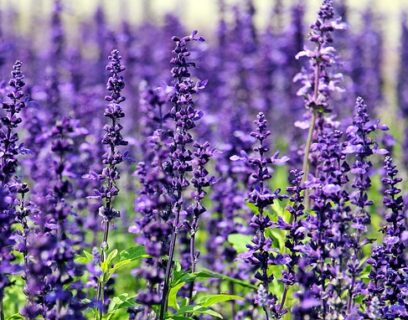 7 MIN
13 Sep
Lavender Cuttings: a step-by-step guide
7 MIN
13 Sep
Lavender Cuttings: a step-by-step guide
 11 MIN
10 Sep
Create Your Low-Maintenance Garden – Tips and Ideas
11 MIN
10 Sep
Create Your Low-Maintenance Garden – Tips and Ideas
 Scarifying Kit
All products after scarifying | Quickly restores the lawn after scarifying | Outsmart weeds quickly with the use of this kit
From: € 39.99
Scarifying Kit
All products after scarifying | Quickly restores the lawn after scarifying | Outsmart weeds quickly with the use of this kit
From: € 39.99
 Spring Lawn Care Kit
MOOWY’s choice for the spring | Quick recovery of your lawn after winter | A strong lawn prevents weeds
From: € 25.99
Spring Lawn Care Kit
MOOWY’s choice for the spring | Quick recovery of your lawn after winter | A strong lawn prevents weeds
From: € 25.99
 Long Lasting Lawn Fertiliser
Effective for 90 days | See results in 14 days! | Suitable for all types of grass and soil
From: € 13.99
Long Lasting Lawn Fertiliser
Effective for 90 days | See results in 14 days! | Suitable for all types of grass and soil
From: € 13.99
Do you want a lawn calendar?
🌱 All important maintenance moments for your lawn during the year. Leave your email and we will send you the lawn calendar for free.
Enter your email
Receive the lawn calendar in the mail
Enjoy a green lawn all year round!




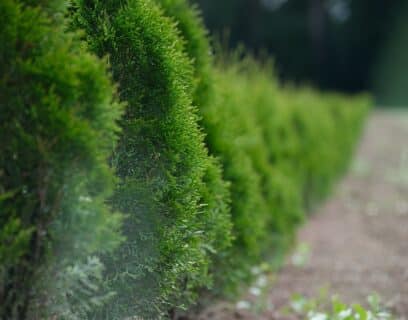






Comments (0)
There are no comments yet. Well then, what are you waiting for to
Be the first to write your comment!inaugurate this pretty page?
Do you have some comments?